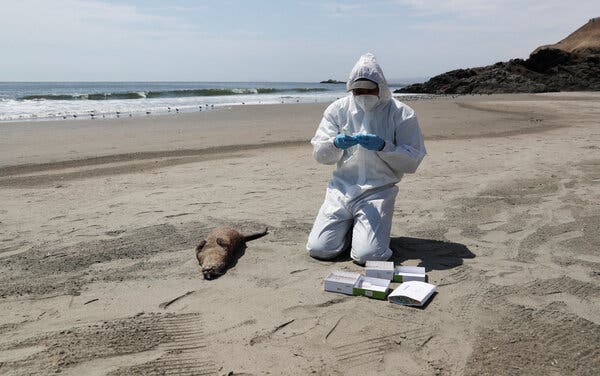
H5N1, an avian flu virus, has killed tens of thousands of marine mammals, and infiltrated American livestock for the first time. Scientists are working quickly to assess how it is evolving and how much of a risk it poses to humans.
Listen to this article · 11:23 min Learn more
Apoorva Mandavilli first reported on bird flu in 2003. Emily Anthes has been writing about bird flu in wild animals since 2022.
In her three decades of working with elephant seals, Dr. Marcela Uhart had never seen anything like the scene on the beaches of Argentina’s Valdés Peninsula last October.
It was peak breeding season; the beach should have been teeming with harems of fertile females and enormous males battling one another for dominance. Instead, it was “just carcass upon carcass upon carcass,” recalled Dr. Uhart, who directs the Latin American wildlife health program at the University of California, Davis.
H5N1, one of the many viruses that cause bird flu, had already killed at least 24,000 South American sea lions along the continent’s coasts in less than a year. Now it had come for elephant seals.
Pups of all ages, from newborns to the fully weaned, lay dead or dying at the high-tide line. Sick pups lay listless, foam oozing from their mouths and noses.
Dr. Uhart called it “an image from hell.”
In the weeks that followed, she and a colleague — protected head to toe with gloves, gowns and masks, and periodically dousing themselves with bleach — carefully documented the devastation. Team members stood atop the nearby cliffs, assessing the toll with drones.
What they found was staggering: The virus had killed an estimated 17,400 seal pups, more than 95 percent of the colony’s young animals.

Newfoundland
CANADA
St. John’s

Newfoundland
CANADA
St. John’s

Newfoundland
CANADA
St. John’s

CANADA
St. John’s
Newfoundland

ICELAND
GREENLAND
CANADA
Newfoundland
Atlantic
Ocean
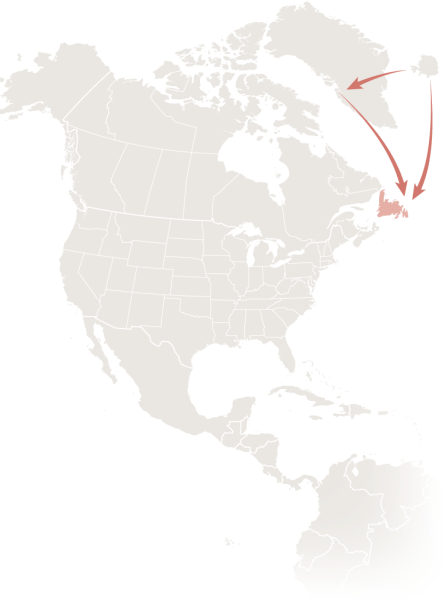
ICELAND
GREENLAND
CANADA
Newfoundland
Atlantic
Ocean

ICELAND
GREENLAND
CANADA
Newfoundland
Atlantic
Ocean

GREENLAND
ICELAND
CANADA
Newfoundland
Atlantic
Ocean

Newfoundland
CANADA
UNITED
STATES
North and
South Carolina
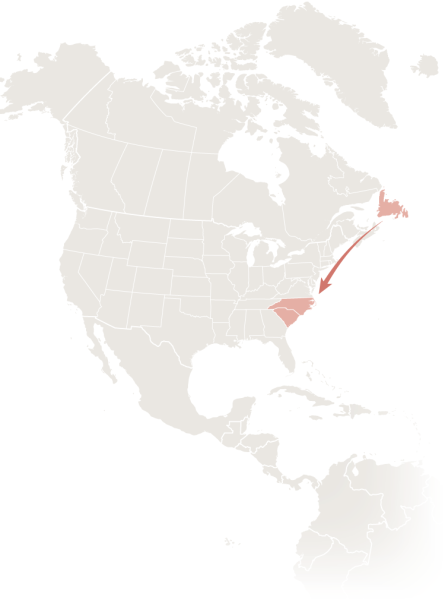
Newfoundland
CANADA
UNITED
STATES
North and
South Carolina

Newfoundland
CANADA
UNITED
STATES
North and
South Carolina

Newfoundland
CANADA
UNITED
STATES
North and
South Carolina

St. Lawrence
Estuary
CANADA
Maine
coast
UNITED
STATES
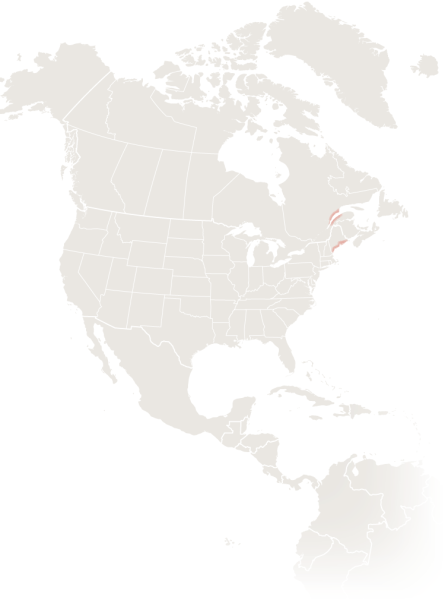
St. Lawrence
Estuary
CANADA
Maine
coast
UNITED
STATES

St. Lawrence
Estuary
CANADA
Maine coast
UNITED
STATES

St. Lawrence
Estuary
CANADA
Maine coast
UNITED
STATES

CANADA
UNITED
STATES
MEXICO
PACIFIC
FLYWAY
COLOMBIA
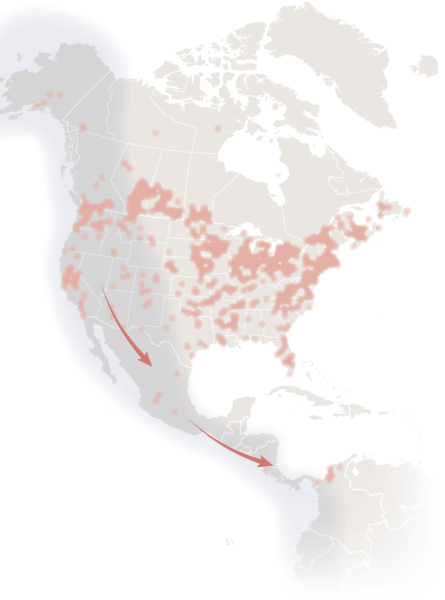
CANADA
UNITED
STATES
MEXICO
PACIFIC
FLYWAY
COLOMBIA

CANADA
UNITED
STATES
MEXICO
PACIFIC
FLYWAY
COLOMBIA

CANADA
PACIFIC
FLYWAY
UNITED
STATES
MEXICO
PACIFIC
FLYWAY
COLOMBIA

COLOMBIA
PERU
PACIFIC
FLYWAY
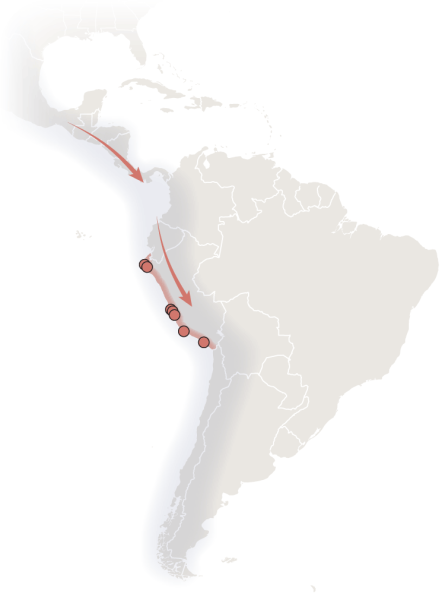
COLOMBIA
PERU
PACIFIC
FLYWAY

PACIFIC
FLYWAY
COLOMBIA
PERU

MEXICO
PACIFIC
FLYWAY
COLOMBIA
PERU

COLOMBIA
PERU
PACIFIC
FLYWAY
CHILE
Cape Horn
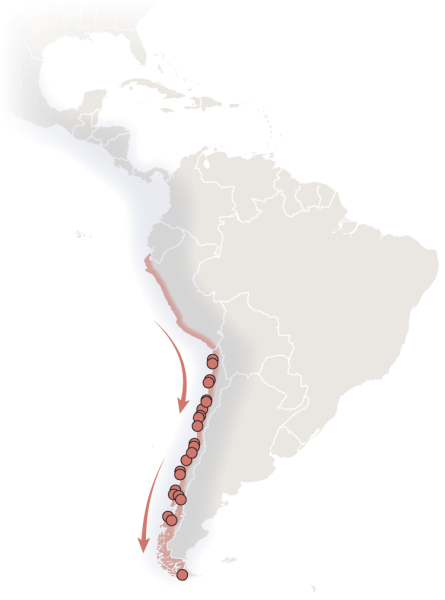
COLOMBIA
PERU
PACIFIC
FLYWAY
CHILE
Cape Horn

PACIFIC
FLYWAY
COLOMBIA
PERU
CHILE
Cape Horn

MEXICO
PACIFIC
FLYWAY
COLOMBIA
PERU
CHILE
Cape Horn

COLOMBIA
BRAZIL
PERU
CHILE
URUGUAY
ARGENTINA
Cape Horn
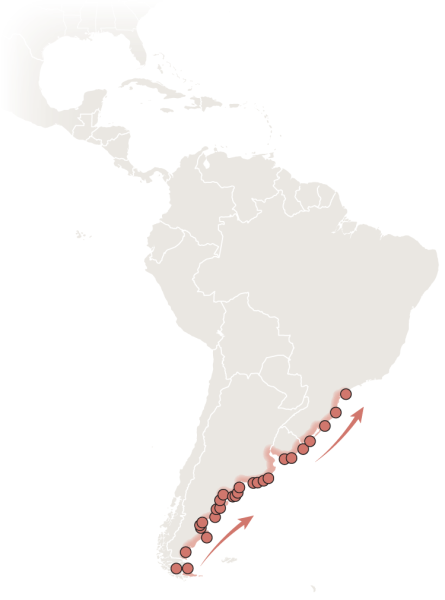
COLOMBIA
BRAZIL
PERU
CHILE
URUGUAY
ARGENTINA
Cape Horn

COLOMBIA
BRAZIL
PERU
CHILE
URUGUAY
ARGENTINA
Cape Horn

MEXICO
COLOMBIA
BRAZIL
PERU
CHILE
URUGUAY
ARGENTINA
Cape Horn

ARGENTINA
Falkland Islands
South Georgia
ANTARCTICA

ARGENTINA
Falkland Islands
South Georgia
ANTARCTICA

ARGENTINA
Falkland Islands
South Georgia
ANTARCTICA

ARGENTINA
Falkland Islands
South Georgia
ANTARCTICA
Dec. 2021 The H5N1 bird flu virus is detected on a farm in St. John’s, Newfoundland, and in a sick wild gull nearby. Hundreds of birds on the farm died, and the rest were culled. It is the first detection of the virus in North America.
Migrating shorebirds may have carried the virus from Europe to Newfoundland through Iceland or Greenland. Or seabirds that congregate in the north Atlantic Ocean might have carried the virus ashore when they returned to Newfoundland to breed.
Jan. 2022 The virus is first detected in the United States, in wild birds in North and South Carolina.
Summer 2022 Hundreds of harbor seals and gray seals die along the coast of Maine and along the St. Lawrence Estuary in Quebec. The seals may have been infected by living near or eating sick and dead birds.
Fall 2022 After months moving west across the United States and Canada, the virus spreads south into Mexico and Colombia, most likely by migrating birds carrying it down the Pacific Flyway.
Nov. 2022 The virus reaches Peru, causes a mass die-off of pelicans along the coast, and begins to spread to other birds and marine mammals. Confirmed samples are shown as dots.
Early 2023 Thousands of sea lions die in Peru and Chile, the earliest known mass sea lion deaths from the virus. The virus continues spreading down the Chilean coast towards Cape Horn.
Late 2023 The virus rounds Cape Horn and moves north into Argentina and Uruguay, killing sea lions and seals and eventually reaching southern Brazil.
Oct. 2023 The virus also spreads south, entering the Antarctic region for the first time. Birds on the island of South Georgia are infected, followed in January by elephant seals and fur seals. Seabirds on the Falklands Islands are also infected.

